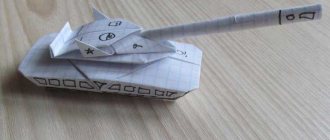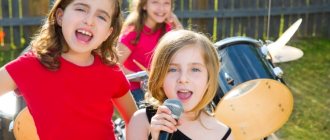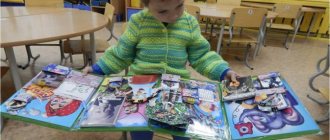MAGAZINE Preschooler.RF
Master class for music directors of preschool educational institutions “Methods of learning musical-rhythmic movements through play.” Motto: “Dance more joyfully with us as soon as possible!”The purpose of the master class: to improve professional level and exchange experience. Objectives of the master class: • transfer of experience through direct and commented demonstration of the sequence of actions, methods, techniques and forms of pedagogical activity; • joint development of methodological approaches and techniques for solving the problem posed in the master class program; • reflection of their own professional skills by the master class participants; • increasing the level of professional competence of master class participants; • formation of an individual style of creative pedagogical activity of each master class participant. Methods and techniques: Practical, verbal, visual-motor.
Equipment: stereo system, CD with recordings: Playing with Santa Claus “The locomotive is coming, the locomotive is coming,” “Merry Aunt” music. Gladkova, Ivan Kupala “Ay, Zainka”, “Waltz-joke” by Shostakovich, “For me, for you” music by E. Poplyanova, any rhythmic polka.
Musical games, dancing, and exercises are necessary for preschoolers not only for entertainment, but also for their physical, mental and aesthetic development. They help children fall in love with music and respond emotionally to it; develop an ear for music and a sense of rhythm, enrich children with new musical knowledge, and expand their musical horizons.
The material through which musical and rhythmic education is carried out must meet the interests and capabilities of the child and be highly artistic. Instrumental music and round dances should be bright, with a pleasant melody, simple harmony and expressive dynamic shades. The performance of musical works must be accurate and artistic. It is necessary that musical works be accessible when reproduced and transmitted in dance. This allows children to convey the character of the music in the simplest movements, helping them to more deeply perceive and consolidate the content of the work.
The content of this section includes teaching children the ability to move in accordance with the nature of the music, with the means of musical expressiveness, as well as the ability to perform simple elements of dances, formations, exercises, dramatizations, dance in circles, play musical games, both plot and non-plot. classes and in independent activities outside of classes.
The tasks for this section are as follows:
- teach children to coordinate movements with the nature of music, with the most striking means of musical expressiveness: move rhythmically and expressively, play musical games, dance in circles, perform dances;
- develop in children a sense of rhythm, which is expressed in the fact that children feel rhythmic expressiveness in music, respond to it and convey it in movement;
- to develop artistic and creative abilities, which in children of senior preschool age are manifested in a unique individual expression of the game image, inventing, combining dance movements, constructing round dances, and using this knowledge in independent activities.
These tasks are solved by fulfilling the main requirement - the correspondence of the nature of movements to the content and development of the musical image.
When teaching children musical and rhythmic movements, dances, games, and exercises, music directors use various methods:
— visual-auditory (expressive performance of music);
- visual-motor (showing games, dances, individual rhythmic exercises);
- verbal (instructions, explanations during movements);
— exercises: multiple repetitions, varying familiar material; exercises in the ability to perceive and convey an image dictated by a song or music.
If these methods are chosen correctly, they will help the child more deeply and consciously assimilate the content and nature of the work.
The method of teaching musical-rhythmic movements is variable. The development of musical-rhythmic movements at each age stage occurs differently.
At the first stage of work, it is necessary to attract children's attention to music, to lead them to the ability to respond to music with movement. Already at a young age, the child responds emotionally to music, which is expressed in facial expressions and gestures. But his movements are imprecise and sometimes not coordinated with the music. The basis of learning for children of this age is imitation of the actions of an adult. The teacher needs, using personal example and relying on the child’s emotional responsiveness, to develop the ability to listen to music, remember and perform simple movements, small roles, and accurately complete tasks. It is necessary to draw children's attention to the fact that they need to move only when music is playing, teach them to react to changes in contrasting parts, marking them with changes in movements, and stop movements when the music ends.
The teacher's demonstration as a technique is needed at the initial stages of learning a game, dance, or exercise. In the future, the music teacher gives instructions during the performance and corrects the actions of individual children. During the school year, a music teacher teaches children various dance and figurative movements, which are then used in games, dances, and round dances.
Musical education through the use of movement takes on a slightly different character when working with middle school children. In the fourth year of life, children feel the change in contrasting parts of music, they can perform and master small musical tasks, but they are still poorly oriented in space. Therefore, the teacher’s task is to teach how to move in accordance with the brightly contrasting nature of the music, at a slow and fast pace, to respond to the beginning and end of the sound of music, to perform the simplest movements, to convey simple imitation movements of game images (“birds are flying,” “horses are galloping,” “ bunnies are jumping”, etc.).
In the fifth year of life, children already have experience listening to music, they can recognize familiar melodies, determine the nature of the music and individual means of musical expression (dynamics - loud, quiet; registers - high, low; tempo - fast, moderate).
Movements become more rhythmic, clear, consistent with the beginning and end of the music. Children perform more varied movements (straight canter, movement in pairs, single foot stomp, heel kick, etc.) and can move in accordance with the less contrasting nature of the music.
In games, the teacher, with his advice, can help children make their movements more similar to the movements of the characters. For example, in the game “Bear and Hares,” the teacher says: “The bunnies are cheerful, friendly, and jump easily. The bear walks heavily, waddles, his paws are large and heavy. Vova is a great guy, he performs the movements of a bunny very beautifully - easily, to the music, and Vitya is a real bear: he walks heavily, waddles, holds his hands correctly, like the paws of a bear,” etc.
The teacher seems to help the child find the right movement and convey the image correctly to the music. The coincidence of figurative words, music and movement develops the child’s imagination, the child more accurately conveys the character of the game character, movements become free, stiffness disappears, and confidence appears. A very important condition for children of the middle group in performing musical-rhythmic movements is expressiveness and clarity.
However, at this age children still need demonstrations of movements and clear, concise explanations. It is difficult for children to orient themselves in space and some formations, such as formation in columns, circles and others. The sequence of learning games, dances, exercises and the time spent on mastering them vary significantly. Some games and dances are learned by children in one or two lessons, while others require longer time.
Children of the sixth and seventh year of life already voluntarily master the skills of expressive and rhythmic movement. Auditory attention develops, and children’s individual abilities are more clearly demonstrated. They can convey with their movements the varied character of the music, dynamics, tempo, simple rhythmic pattern, change movements in connection with the introduction, with the change of parts of a musical work. Children can master a variety of movements (from rhythmic running with high leg lifts and jumping from foot to foot to polka step, half squat, etc.).
In the older group, the teacher achieves emotional and expressive performance of images by children.
In the preparatory group, children must be conscious of their role and perform movements more efficiently.
In older preschool age, the complication of the requirements of the musical and rhythmic repertoire is aimed at developing in children the ability to feel, experience, distinguish musical images and use means of their expression in movement. The ability to perceive and convey an image, to move expressively in accordance with music is formed in the process of learning games, round dances, dances, and exercises. All this is facilitated by expressive performance, imaginative and accurate display of movements, games, round dances, dramatizations, which give children the opportunity to act creatively.
Children's creative activity gradually develops through targeted learning, expanding musical experience, activating feelings, imagination and thinking.
Thus, in the conditions of interesting, exciting activity—musical and rhythmic—the child’s musical and aesthetic development occurs.
Let us consider specifically the methodology for conducting games, round dances, dances, exercises for children of primary, middle and senior preschool age and teaching methods.
The method of teaching musical-rhythmic movements to three- and four-year-old children is based mainly on the teacher showing children moving well, on emotional and figurative explanations and instructions. In games, the development of the plot is directed by music, determining the changes and nature of movements. The content of story games is dictated by the title and text. For example, the musical game “Vanya Walks.” Learning the game is associated with the disclosure of a musical and poetic image, with a story about its actions. The teacher can first explain to the children how to perform a round dance movement in a circle, then give them the opportunity, listening to the music and the words of the song, to independently portray “Vanya” in their own way. Games “Golden Gate”, “Trap”, game with Santa Claus “The steam locomotive is coming.”
Non-plot musical games most often have certain movements (“Wattage”). In such games, learning includes demonstration and explanation. Other techniques can also be used. First of all, children listen to music to feel its general mood and character. Next, they are explained the construction and form of the work (since the movements change in accordance with the parts, musical sentences, phrases).
In a playful way, various clapping, stamping, swinging, rotating the hands, etc. are learned. Then you can invite the children to figure out how to move to this music, discuss these options (using a children's demonstration) and, in conclusion, show the formation that the kids should learn. This technique helps to master skills in the active perception of music, the development of independent actions, and creative abilities. Dances are learned in the same way as games, but often require additional exercises in mastering and improving dance elements and changes that are unfamiliar to children. The teacher, using different music that corresponds to the movements, exercises the children in these skills.
Some exercises are of an auxiliary nature - aimed at mastering elements of movements that make it difficult for children to dance, dance, and play. We divide all present music directors into 3 age groups: - Younger preschool age (those who have cubes under their chair); - Middle preschool age (those who have rattles under their chair); - Senior preschool age (those who have spoons under their chairs).
Game exercise “Merry Aunt” music. Gladkova.
I have one aunt, this aunt is a merry fellow. When she dances, she does this: Oh, my hands, my hands, my hands are good Oh, my hands, my hands, let’s dance together for the soul!
I have one aunt, this aunt is a merry fellow. When she dances, she does this: Ah, my shoulders, my shoulders, my shoulders are good Ah, my shoulders, my shoulders, let’s dance together for the soul!
I have one aunt, this aunt is a merry fellow. When she dances, she does this: Oh, my sides are my sides, my sides are good Ah, my sides are my sides, let’s dance together for the soul!
I have one aunt, this aunt is a merry fellow. When she dances, she does this: Oh, my legs, my legs, my legs are good Oh, my legs, my legs, let’s dance together for the soul!
I have one aunt, this aunt is a merry fellow. When she dances, she does this: Oh, my ears, my ears, my hands are good Oh, my ears, let’s dance together for the soul!
I have one aunt, this aunt is funny. When she dances, she does this: My jumps, you jumps are good My jumps, let’s dance together for the soul!
In the first part of each verse, you can train children in performing various dance movements. We walk in a circle with a round dance step, a fractional step, hops, a small step on half toes, a side gallop, a step with high legs. To lose, each music director performs movements appropriate to the selected age.
The rabbits will dance to the music of Ivan Kupala “Ay, Zainka.” At the beginning, the bunnies wake up, then they wash themselves, jump to warm up, wiggle their ears, jump in circles, it turns out to be fun. The main thing is to perform all the movements while dancing. You can come up with a variety of movements, I relied on the well-known game - dance bunny.
Relax Exercise “Puppets” music “Waltz Joke” Shostakovich
Music director: Imagine that a thread is tied to each joint. From the beginning, all the threads are taut: the “dolls” stand with straight backs and arms raised high, since threads are also tied to the tips of their fingers. But then I begin to “cut off” the threads coming from the fingers one by one with scissors, and they fall freely. When I “cut” the threads from my elbows, my arms drop freely. Next I “cut off” the strings from the head, back, and knees. Our “puppet” completely relaxed and either squatted down or gently sank to the floor). The puppeteer participants, holding imaginary scissors in their hands, cut off the imaginary threads holding the limbs of the puppet participants. Music director: This exercise teaches children relaxation (relaxation). And lying on the floor during class is a great pleasure for the baby
Game exercise “Gnomes” (polka music) Children-gnomes go to the forest with empty baskets, return from the forest with berries (step 1/8, fractional step, retops) and with mushrooms (step ¼, heavy step).
Dance-game for kids “For me, for you”, music by E. Poplyanova.
1. I, you have Beautiful hands, (palms up and down) I, you have Beautiful legs. (putting your feet on your heels)
CHORUS: With our hands we clap, clap, clap, clap. You and I with our feet Top, top, top, top.
2. I, you have a Nose, like a button, (movement “bib”) I, you have a Mouth, like a cranberry. (kiss) CHORUS.
3. I, you (with a finger on the eyebrows) Beautiful eyebrows. I, you (pat yourself or a friend on the head) have a smart head. CHORUS.
4. I, you have cheeks like apples, I, you, have dimples on my cheeks. CHORUS.
5. I, you have ringing palms, I, you have legs like springs CHORUS: You and I have hands Slap, slap, slap, slap. (on the knees) You and I, with our legs, jump-jump, jump-jump!
| Next > |






